Related Research Articles

In computing, a visual programming language is a programming system that converts graphical program elements to machine code through special software. A VPL allows programming with visual expressions, spatial arrangements of text and graphic symbols, used either as elements of syntax or secondary notation. For example, many VPLs are based on the idea of "boxes and arrows", where boxes or other screen objects are treated as entities, connected by arrows, lines or arcs which represent relations.

Retrocomputing is the use of older computer hardware and software in modern times. Retrocomputing is usually classed as a hobby and recreation rather than a practical application of technology; enthusiasts often collect rare and valuable hardware and software for sentimental reasons. However, some do make use of it.
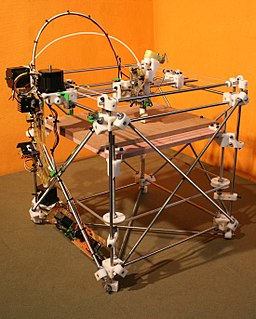
The open-design movement involves the development of physical products, machines and systems through use of publicly shared design information. This includes the making of both free and open-source software (FOSS) as well as open-source hardware. The process is generally facilitated by the Internet and often performed without monetary compensation. The goals and philosophy of the movement are identical to that of the open-source movement, but are implemented for the development of physical products rather than software. Open design is a form of co-creation, where the final product is designed by the users, rather than an external stakeholder such as a private company.
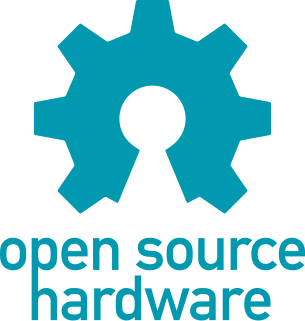
Open-source hardware (OSH) consists of physical artifacts of technology designed and offered by the open-design movement. Both free and open-source software (FOSS) and open-source hardware are created by this open-source culture movement and apply a like concept to a variety of components. It is sometimes, thus, referred to as FOSH. The term usually means that information about the hardware is easily discerned so that others can make it – coupling it closely to the maker movement. Hardware design, in addition to the software that drives the hardware, are all released under free/libre terms. The original sharer gains feedback and potentially improvements on the design from the FOSH community. There is now significant evidence that such sharing can drive a high return on investment for the scientific community.

Arduino is an open-source hardware and software company, project, and user community that designs and manufactures single-board microcontrollers and microcontroller kits for building digital devices. Its hardware products are licensed under a CC-BY-SA license, while software is licensed under the GNU Lesser General Public License (LGPL) or the GNU General Public License (GPL), permitting the manufacture of Arduino boards and software distribution by anyone. Arduino boards are available commercially from the official website or through authorized distributors.
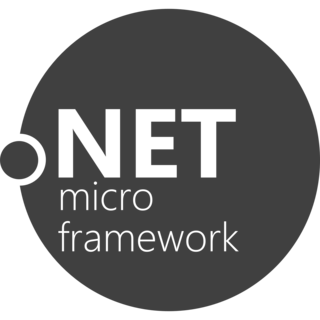
The .NET Micro Framework (NETMF) is a .NET Framework platform for resource-constrained devices with at least 512 kB of flash and 256 kB of random-access memory (RAM). It includes a small version of the .NET Common Language Runtime (CLR) and supports development in C#, Visual Basic .NET, and debugging using Microsoft Visual Studio. NETMF features a subset of the .NET base class libraries, an implementation of Windows Communication Foundation (WCF), a GUI framework loosely based on Windows Presentation Foundation (WPF), and a Web Services stack based on Simple Object Access Protocol (SOAP) and Web Services Description Language (WSDL). NETMF also features added libraries specific to embedded applications. It is free and open-source software released under Apache License 2.0.
Dexter Industries is a company that designs robots for education, research, and personal use. The company makes several products that expand the LEGO Mindstorms system, Raspberry Pi and Arduino prototype system. The Products contains beginners and advanced parts for your projects.

Minibloq is a graphical development environment for Arduino and other platforms. Its main objective is to help in teaching programming. It is specially used in robotics at elementary, middle and high schools. It's widely used in Argentina, where just in the San Luis province, more than 60000 children has been trained with this software in public schools.
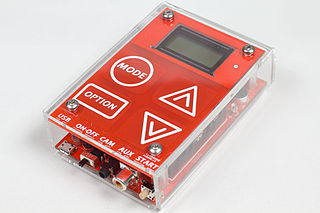
Triggertrap was a company that created hardware and software products centred on triggering SLR cameras. Products included several Arduino-based camera triggers, along with mobile apps which interfaced with cameras using a device that plugs into the headphone socket of the smartphone or tablet. In May 2012, Triggertrap introduced Triggertrap Mobile for iOS, followed by a version for Android in September 2012. Triggertrap Mobile utilized the sensors and processing power of a smartphone or tablet running IOS to trigger cameras based on sound, motion, vibration, or location, in addition to timelapse, bulb ramping, and other features. Triggertrap ceased trading on the 31st of January 2017. His Founder CEO was the Dutch photographer Haje Jan Kamps.
Microsoft .NET Gadgeteer is an open-source rapid-prototyping standard for building small electronic devices using the Microsoft .NET Micro Framework and Microsoft Visual Studio/Visual C# Express.

Lockitron is a device which can lock and unlock doors via remote control, typically via a smartphone. Lockitron is made by Apigy, a start-up based in Mountain View, California. Apigy was a graduate of the Y Combinator start-up accelerator.

Salvius is the first open source humanoid robot to be built in the United States. Introduced in 2008, Salvius, whose name is derived from the word 'salvaged', has been constructed with an emphasis on using recycled components and materials to reduce the costs of designing and construction. The robot is designed to be able to perform a wide range of tasks by having a body structure that is similar to that of a human. The primary goal for Salvius is to create a robot that can function dynamically in a domestic environment.

OpenBCI is an open-source brain-computer interface platform, created by Joel Murphy and Conor Russomanno, after a successful Kickstarter campaign in late 2013.
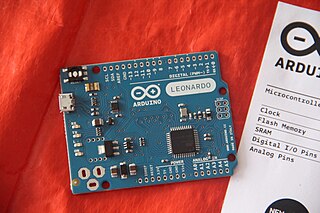
Comparison of Single-board microcontrollers excluding Single-board computers

Makeblock is a private Chinese technology company headquartered in Shenzhen, China, that develops Arduino-based hardware, robotics hardware, and Scratch-based software, for the purpose of providing educational tools for learning. This includes programming, engineering, and mathematics through the use of robotics.

The Arduino Integrated Development Environment (IDE) is a cross-platform application that is written in functions from C and C++. It is used to write and upload programs to Arduino compatible boards, but also, with the help of third-party cores, other vendor development boards.

Home Assistant is a free and open-source software for home automation that is designed to be the central control system for smart home devices with focus on local control and privacy. It can be accessed via a web-based user interface, via companion apps for Android and iOS, or using voice commands via a supported virtual assistant like Google Assistant and Amazon Alexa or open-source alternatives such as "Almond" and "Genie" from Stanford Open Virtual Assistant Lab at Stanford University.
References
- ↑ "Ganadores 2010 — INNOVAR". Innovar.gob.ar. Retrieved 2012-12-20.
- ↑ "Minibloq". Minibloq. Retrieved 2012-12-20.
- ↑ "Docs" (in Spanish). Robotgroup.com.ar. Retrieved 2012-12-20.
- ↑ "Multiplo | The Tech Museum of Innovation". Thetech.org. Archived from the original on 2012-12-24. Retrieved 2012-12-20.
- ↑ "RobotGroup |".
- ↑ "Crowdfunding Campaign |".